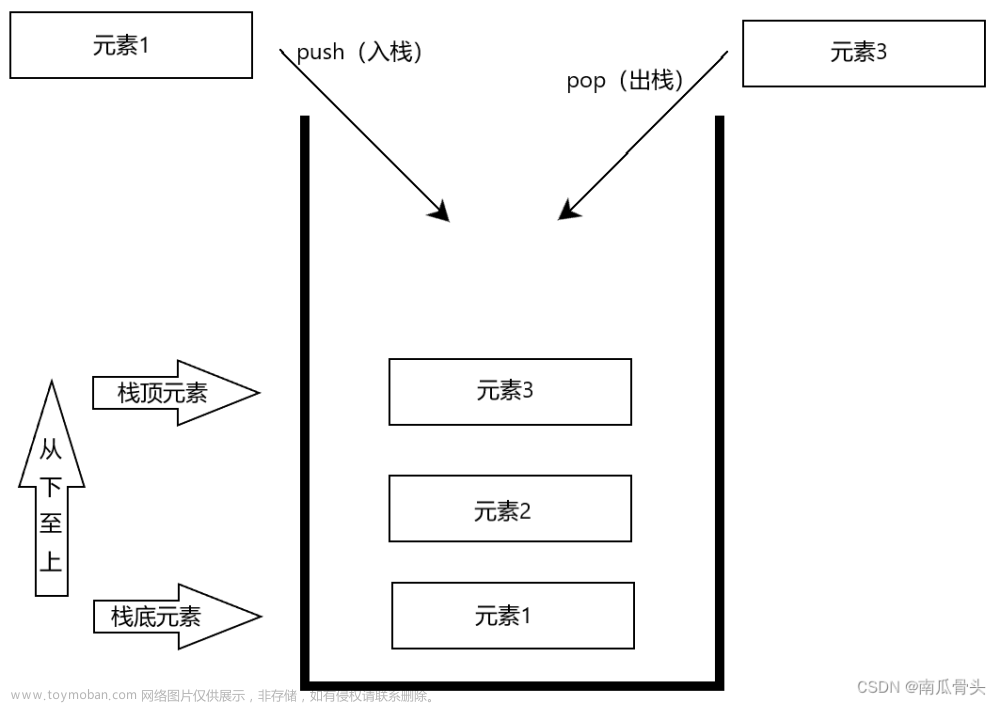队列
一种操作受限制的线性表
一、基本概念:
- 队列是一种线性储存数据结构,数据元素遵循“先进先出”(First in First out (FIFO))的原则
- 添加元素在队尾(只允许添加元素)实现,删除元素在对头(只允许删除元素)实现
适用条件
排队 挂号 消息队列 广度优先搜索等符合队列特点的操作
二、队列的操作:
queue<int> q; //以int型为例
int x;
q.empty() 如果队列为空返回true,否则返回false
q.size() 返回队列中元素的个数
q.pop() 删除队列首元素但不返回其值
q.front() 返回队首元素的值,但不删除该元素
q.push(x) 在队尾压入新元素
q.back() 返回队列尾元素的值,但不删除该元素
三、 队列的分类;
- 基于数组的循环队列(循环队列)
- 基于链表的队列(链表队列)
四、基于数组的循环队列
数组存储的缺点:
入队操作:在数组的末尾添加元素,时间复杂度为O(1)
出队操作:数组头部元素出队之后,头部之后的元素均需要往前移动一个位置,时间复杂度为O(n)
循环队列
为了降低时间复杂度,将数组当作一个首尾相连的圆环,分别用两个标志front、rear代表队列的头部和尾部。删除元素时,队首标志往后移,添加元素时,若队尾没有空间,考虑数组的头部空间若还有,则在队头添加元素,防止数组内存空间的流失。
判断满或空的方法:
方法一:
设置一个标志变量flag,同时满足front=rear且flag=1时为满队列
方法二:
空一个元素,保持为空
1.空队列:队首标志与队尾重合
2.满队列:队尾标志+1=队首标志
C++实现:
#include<iostream>
using namespace std;
//队列的抽象类
template <class T>
class queue
{
public:
virtual ~queue() {};
virtual bool empty() const=0;
virtual int size() const=0;
virtual T& front() = 0;
virtual void pop() = 0;
virtual void push(const T& theElement) = 0;
};
//队列的数组类实现
template<class T>
class arrayQueue :public queue<T>
{
arrayQueue(int initialCapacity = 10);
~arrayQueue() { delete[]queue; }
bool empty()const
{
if (queuefront == queuerear)
return true;
return false;
}
int size() const
{
return (queuerear - queuefront + capacity) % capacity;
}
T& front()
{
if (queuefront == queuerear)
{
cout << "The queue is empty!" << endl;
return false;
}
return queue[queuefront];
}
void pop()
{
if (queuefront == queuerear)
cout << "The queue is empty!" << endl;
queue[queuefront].~T;
queuefront = (queuefront + 1) % capacity;
}
void push(const T& theElement);
private:
int capacity;
int queuefront;
int queuerear;
T* queue;
};
template<class T>
arrayQueue<T>::arrayQueue(int initialCapacity)
{
if (initialCapacity < 1)
cout << "InitialCapacity must >0!" << endl;
capacity = initialCapacity;
queue = new T[capacity];
queuefront = 0;
queuerear = 0;
}
template<class T>
void arrayQueue<T>::push(const T& theElement)
{
if ((queuerear + 1) % capacity == queuefront)
{
T* temp = new T[2 * capacity];
//没有形成环
if (queuefront == 0)
copy(queuefront, queuerear, temp);
else
{
copy(queuefront, queue + capacity, temp);
copy(queue, queuerear, temp + queue + capacity - queuefront);
}
queuefront = 0;
queuerear = capacity-1;
delete[]queue;
queue = temp;
}
queue[queuerear] = theElement;
queuerear = (queuerear + 1) % capacity;
}
五、基于链表的队列
特点:
以结构体节点为单位,不存在元素移动复杂度问题以及内存的浪费问题。
链表头为队列头部,链表尾为队列尾部。
设计两个变量queueFront、queueBack记录队列的两端变化
指针queueFront为标志头指针,指针queueBack指向最后一个元素
C++实现
#include<iostream>
using namespace std;
//队列节点结构体
template<class T>
struct QueueNode
{
T element; //存储元素
QueueNode<T>* next; //记录下一个队列节点
QueueNode(T a, QueueNode<T>* b=nullptr)
{
this->element = a;
this->next = b;
}
};
template<class T>
class ChainQueue
{
public:
ChainQueue();
~ChainQueue();
bool Empty()const;
int size() const;
void pop();
void push(T theElement);
T& top();
private:
QueueNode<T>* front; //指向头部前一位的空指针
QueueNode<T>* back; //指向队列尾部的指针
int count;
};
//队列的具体实现
template<class T>
ChainQueue<T>::ChainQueue()
{
front = new QueueNode<T>(NULL);
back = front;
count = 0;
}
template<class T>
ChainQueue<T>::~ChainQueue()
{
while (front->next!= nullptr)
{
QueueNode<T> *temp = front->next;
front->next = front->next->next;
delete temp;
}
}
template<class T>
bool ChainQueue<T>::Empty()const
{
if (front==back)
return true;
return false;
}
template<class T>
int ChainQueue<T>::size() const
{
return count;
}
template<class T>
void ChainQueue<T>::pop()
{
if (count == 0)
cout << "The ChainQueue is empty!" << endl;
QueueNode<T>* temp = front->next;
front->next = front->next->next;
delete temp;
count--;
}
template<class T>
void ChainQueue<T>::push(T theElement)
{
QueueNode<T>* temp = new QueueNode<T>(theElement);
back->next = temp;
back = temp;
count++;
}
template<class T>
T& ChainQueue<T>::top()
{
if (count == 0)
cout<<"The ChainQueue is empty!"<<endl;
return front->next->element;
}
int main()
{
ChainQueue<int> cq;
cout << "Empty? " <<cq.Empty() <<endl;
cq.push(10);
cq.push(20);
cout << "The top element is" << cq.top() << endl;
cout << "The size is " << cq.size() << endl;
cq.push(30);
cq.push(40);
cq.pop();
cout << "The top element is" << cq.top() << endl;
cout << "The size is " << cq.size() << endl;
cq.pop();
cq.pop();
cout << "The top element is" << cq.top() << endl;
cout << "The size is " << cq.size() << endl;
system("pause");
return 0;
}
C++队列_Potato_10的博客-CSDN博客_c++ 队列 文章来源:https://www.toymoban.com/news/detail-778347.html
C++队列详解_T_Y_F666的博客-CSDN博客_c++ 队列文章来源地址https://www.toymoban.com/news/detail-778347.html
到了这里,关于C++-queue:queue基本用法【q.push(x)、q.front()、q.back()、q.pop()、q.size()、q.empty()】的文章就介绍完了。如果您还想了解更多内容,请在右上角搜索TOY模板网以前的文章或继续浏览下面的相关文章,希望大家以后多多支持TOY模板网!









